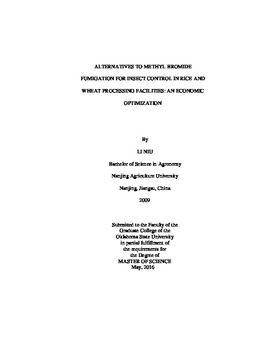| dc.description.abstract | Insect control is very important in processing facilities for grain and grain-based products. Managers need economic information to choose appropriate insect control methods in their goal of profitably producing wholesome products. One approach to insect control is to fumigate at calendar-based intervals, perhaps determined by historical success or scheduled on holiday weekends to minimize shutdown costs. An alternative approach is to fumigate based on monitoring and evaluation of insect population dynamics. Monitoring-based fumigation may avoid unnecessary treatments, which would reduce costs, insecticide use, insect resistance to insecticides, and worker exposure to insecticides. However, little is known about the costs and efficacy of these strategies in food processing facilities. Here, costs of several insect control strategies are evaluated and compared using an economic-engineering approach. The strategies include sanitation, calendar-based fumigation, and monitoring-based fumigation (an IPM approach). Components of treatment cost considered include sanitation cost, insect monitoring cost, fumigation cost, and the opportunity cost of shutdown time. An insect growth model is used to estimate the insect population under each treatment strategy. Lowest-cost strategies that achieve target insect population thresholds or below are selected. The selected lowest-cost strategies under most scenarios are calendar-based fumigations. Under the range of weather conditions and insect population thresholds considered here, monitoring-based fumigation strategies result in more, rather than fewer, fumigations on average. Thus, this particular IPM approach raises costs and does not necessarily reduce insecticide use. | |
